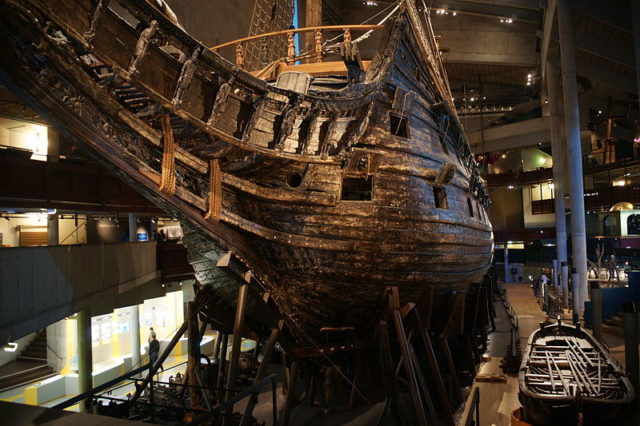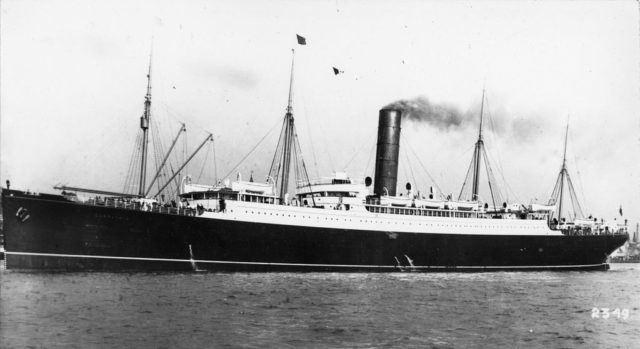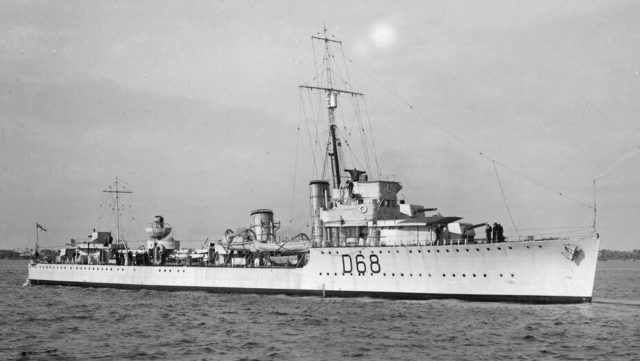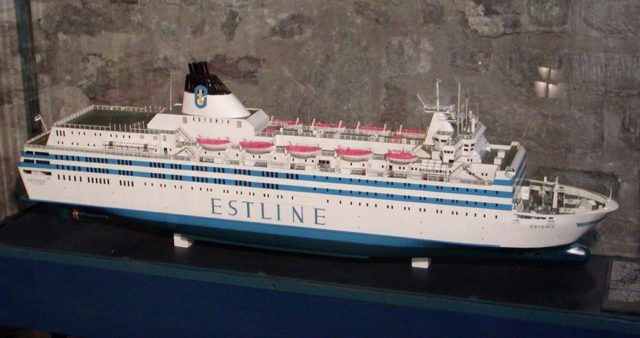If it’s sea-faring tales you’re after, our tale of the top ten shipwrecks is a must read, from stories of treasure troves to those of lost lovers and warfare.
Many majestic and historic vessels have met their demise at the bottom of the seas. The seven seas have seen many a traveler and taken many a victim – none more tragic and heroic than those in these tales that have since become legend. Even though these brave souls have been lost at sea, they hold an eternal reverence in society.
10. SS Sultana

People may not be familiar with the tale of dear SS Sultana. It is a tragedy that resulted in the loss of more than 1800 lives. The fateful day fell on 27 April 1865, when the vessel’s engine room caught fire, dooming the ship and all its occupants to a watery grave in the Mississippi River.
The SS Sultana was a side-wheel river steamboat used at the end of the American Civil War. After the war, she was utilized to convey POWs. What occurred on that fateful day has been described as the worst maritime accident in American naval history. Although built to carry 376 passengers, the boat was packed to the top with 2427 souls.
The disaster was overshadowed by significant political events that occupied the media at the time. The SS Sultana, constructed for the cotton trade, was completed in 1863 at the John Litherbury Boatyard.
The main factor that contributed to the ship’s demise was that shoddy repairs had been made to the boiler room. This, coupled with overcrowding, resulted in a disaster that killed many innocent people.
9. RMS Rhone, Royal UK mailing ship

Also known as packet ships, these vessels were designed for carrying mail. This particular mailing ship was carrying 123 people on board when it sank. The ship tangled with a hurricane on 27 October 1867 and was lost. She was wrecked off the coast of Salt Island, Virgin British Isles.
The Royal Mail Ship Rhone had a twin sister, Duoro. Both were commissioned during 1863. Construction of Rhone was carried out by Millwall Iron Works, while Rhone’s sister ship was constructed by Caird and Company.
The wreck is now a popular diver’s paradise, attracting many adventurers to the Caribbean.
8. The Vasa

The construction of Vasa began in 1626 and was completed in 1628, the same year that the ill-fated Swedish warship foundered on its maiden voyage.
It’s not clear what caused the ship to sink just 1300 miles into the voyage. The commission of inquiry to determine the cause of the fiasco was inconclusive. During 1961, a major salvage operation was undertaken on the Vasa. A Maritime archaeologist has since discovered the bodies of 15 people.
The Vasa was a naval masterpiece of its time, boasting bronzed cannons. The ship, which is now housed at the Vasa Museum, has provided valuable insight into the warfare of the 17th century. It remains a tourist attraction that has seen over 35 million visitors.
7. The Mary Rose

Mary Rose was a tough old warship commissioned by King Henry VIII. Mary Rose put up her last stand with brevity on 17 July 1545. No stranger to warfare, she had a 33-year service history against France, Scotland, and Brittany. She was rebuilt during 1543 and was finally laid to rest at the Isle of Wight.
In Mary Rose fashion, she was leading a charge against the French when she sank in Solent. She made her reappearance again in 1971 and was not salvaged until 1982 by the Mary Rose Trust. This operation was considered to be one of the most complex and expensive salvages. The treasures within Mary Rose made the expedition to bring her back up all worthwhile. Thousands of artifacts and the Mary Rose herself have provided invaluable insight into Tudor warfare. The cost and complexity of the mission are comparable only to number eight on our list, the Vasa. All the artifacts and what’s left of the ship is now at home in Portsmouth Historic Dockyard.
6. RMS Carpathia
RMS Carpathia was more than just a passenger cruise liner. The Carpathia will always be remembered for its heroics on the fateful day the Titanic sank.
It was the first ship to arrive at the maritime disaster, only to find itself the victim of its own shipwreck story six years later on 17 July 1918. The tale of the RMS Carpathia is that of a slain hero.

RMS Carpathia was torpedoed by the German submarine U-55 off the Irish coast. Five crew members lost their lives that fateful day. Although in 1999, when claims were made that Carpathia had been discovered, it was not until 2000 that she was actually located by author and diver Clive Cussler. The salvage is now owned by a consortium that owns the rights to the Titanic, Premier Exhibitions Inc.
5. HMS Victory

Built in 1737, the HMS Victory’s story is one of folklore, as the ship disappeared out of site in the English Channel in the year 1744. The 100-gun warship remained missing for over 250 years until Americans found her in 2008. The ship was only 43 (nm) or 80 km from where she met with an accident and disappeared. Under Maritime Law, the HMS Victory remains the property of Britain.
4. SS Andrea Doria

Andrea Doria, built to restore a country’s national pride that suffered after World War Two, was one of the best and supposedly safest liners. She was built in Genoa, Italy in the shipyard of Ansaldo.
Andrea Doria was once the pride of all Italian cruise liners but is now infamous as one of the worst maritime disasters. Andrea collided with another liner, the MS Stockholm, resulting in 46 deaths and her sinking on July 25, 1956. The disaster occurred while trying to approach the Port of New York.
Andrea Doria today is a famous scuba diving expedition hotspot and has been dubbed the Mount Everest of scuba diving.
3. HMAS Vampire or the HMS Wallace

The Vampire, as it is affectionately known, was first called the HMS Wallace. Built for the Royal Navy, it served a long history and was no stranger to war. The battle warship had seen many a fight and never shied away from danger. The Vampire saw its demise at the hands of the Japanese as it was escorting HMS Hermes in 1942.
Built in 1917, the Vampire was a V-type destroyer. It was during World War Two that the Vampire met its match and went down in a blaze of glory. This one is an old war dog of note.
2. The Beloved MS Estonia

The tragic story of Estonia is the second-worst sinking in the 20th century, eclipsed only by the Titanic. Built in a German shipyard in 1980 and first named Viking Sally, Estonia was an achievement of design and engineering by Meyer Werft in Papenburg.
Tragedy struck on 28 September 1994 in the Baltic Sea when 852 people lost their lives. The shipwreck was indeed investigated, however, a conclusive answer as to what caused the accident still eludes investigators.
This has opened the doors for conspiracy theories regarding the incident, with some claiming that Estonia was used to ferry military equipment. Others claim that it was a multi-governmental cover up. Whatever the cause, one thing the Estonia disaster led to was safer regulations and improved lifeboats – a similar reaction to the sinking of the Titanic.
1.The Titanic
The saddest day of all the maritime disasters, 14th April 1912, is a day etched into the memories of all. It still brings tears to many eyes, and how can it not; the greatest ocean liner of its era and believed to be unsinkable?
The Titanic was a most sophisticated liner; there had been no such ocean liner like it. It set sail from Southampton, destined for New York. The irony was that the unsinkable ship sank on its maiden voyage, plunging 1,517 lives to their icy graves. The official report was that she collided with an iceberg, unraveling a chain of events that led to her sinking.

It took Titanic until the early hours of the next day to completely sink. The first rescue boat on the scene was HMS Carpathia, which itself sank six years later. It was this shipwreck that leads to many reforms in the passenger liner industry. The Titanic was a marvel of engineering, and one of history’s all time worse maritime accidents, Marine Insight reported.
Read another story from us: History that lies beneath the waves: Scotland’s concealed shipwrecks
Buried in these tales are lessons for us all about the heroics of some and the shortcomings of others. To this day, these legends remind us that the brave men and women who lost their lives at sea are never forgotten. It’s through these tragedies that great efforts have been made to learn from previous mistakes, fostering improvement in terms of safety and lifeboats aboard ships today.
